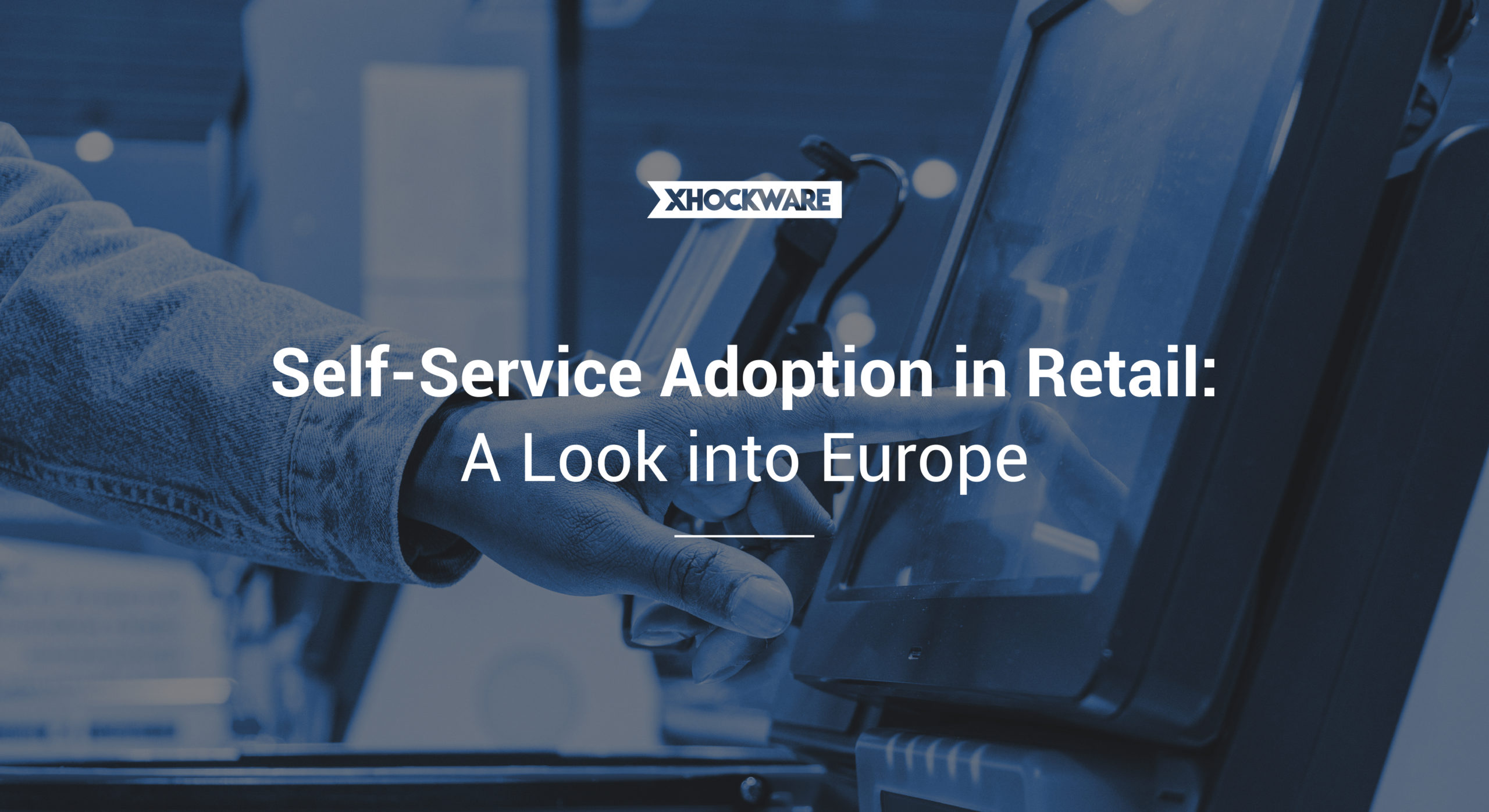Self-service checkout technology has been revolutionizing the retail industry in European countries. However, like a rollercoaster ride, some countries have quickly jumped on board, while others are still hesitating. In addition, the COVID-19 pandemic and safety regulations have played a role in the increased adoption of self-service checkouts in retail stores, not only in the food sector but also in other retail formats like DIY, just to name the notable example of one of our Clients, Leroy Merlin.

Factors Influencing the Adoption of Self-Service Checkout Technology in European Countries
Various factors influence the adoption of self-service checkouts, including political, demographical, cultural, economical, and technological infrastructure. For example, in some countries, customers prioritize speedy transactions over small talk with the cashier, while in others, the personal touch of human interaction is more valued.
Demographics also play a significant role in the adoption of self-service checkout technology. For example, the older generation may prefer traditional checkouts to interact with the cashier. On the other hand, the younger generation is more likely to embrace self-service options for quick and efficient transactions.
As with adopting any other innovative technology, each geography requires some time to adapt before the moment a relevant portion of individuals become regular users and adoption is generalized. The Diffusion of Innovation Theory can be used to demonstrate how the trend of self-service checkouts has innovators and early adopters, followed by the majority who adopt it and the laggards who are slow to adopt.
Now, these different factors can influence this theory. Political and regulatory factors can significantly impact the adoption of self-service checkout technology in retail. Technological development in other areas also plays a role in adopting self-service checkouts. Geographical factor has impacted adoption as well. In big cities, it is more common to have self-service checkouts in stores because these cities attract a younger population for studies, services, and jobs which is more likely to use any form of self services. Smaller towns and villages where the majority of people are older, are less likely to massively use them in the stores.
Adoption in European Countries Varies?
The availability and types of self services technology vary significantly across European countries. While some countries have implemented self-scanning solutions and mobile apps for shoppers, others rely mainly on self-service checkout within larger supermarkets. Surprisingly, some of the smallest retail stores in certain countries offer self-service checkouts, whereas, in other countries, they are mainly available in the largest supermarkets.
As consumer demand for convenience and efficiency continues to grow, self-service checkouts will likely become increasingly prevalent throughout all European countries.

Germany
More and more supermarkets in Germany are adopting self-service checkouts, but they still have some catching up compared to other leading countries like the UK, France, and the US. One exciting development is the use of mobile app technologies, which allow customers to scan and pay their items with their mobile devices, making shopping even more convenient. However, some challenges still need to be addressed, such as the importance of human customer service.
Despite these challenges, the trend of self-service checkouts is expected to continue growing in Germany as retailers aim to improve efficiency and enhance the customer experience. Retail giants like Kaufland, Aldi, and Lidl, which originated in Germany, are leading the way in implementing this technology in their stores across different countries, as they see it as a competitive advantage that reduces wait times and boosts efficiency. As technology evolves, retailers must continue investing in innovative ways to enhance the shopping experience, and self-service checkouts are here to stay and likely to shape the retail industry for years to come.
France
In France, one of the better adapted to self-services checkout technology, Scan & Go services are also becoming popular. Customers can self-scan items in-store using their mobile phones, which speeds up the purchasing process. As a result, more retailers in France are embracing self-service technology and implementing Scan & Go solutions. Even small stores are integrating Scan & Go apps, which are gaining popularity among customers.
Norway
Technology adoption in the retail industry is rising in Norway, with self-service checkouts, mobile payment systems, and digital signage being the most notable trends. Mobile payment systems such as Vipps and MobilePay have gained popularity, and digital signage is being used to enhance the in-store experience for customers. The adoption of technology in Norwegian retail is on par with other developed countries, although there are differences in the types of technology being adopted. Despite the challenges, such as cost and training, the trend is expected to continue to grow, and retailers will continue to invest in new technologies to improve the customer experience and increase efficiency. The future looks bright for technology adoption in Norwegian retail, and it will be exciting to see how retailers will continue to innovate and adapt to customers’ changing needs.
Finland
Looking into the adoption of self-service checkouts in Finland, it’s no different! In fact, the country’s biggest retail chains, S-group and Kesko, have been leading the charge in adopting these nifty machines. However, adoption has been slower compared to the UK, for instance.
But S-Group and Kesko have been steadily rolling out self-service checkouts in their stores, and now they can be found not just in the larger supermarkets but even in smaller stores too. It’s no surprise that they’re dominating the market, as they’re always looking for new ways to innovate and improve the shopping experience for their customers. Kesko and S-Group have implemented self-service suites even in smaller grocery stores. Self–scanning mobile apps are still a fresh idea, but bigger supermarkets like Prisma have already adopted self-scanning equipment in-store in bigger cities in Finland.

Portugal
Portugal is no exception when it comes to the adoption of SCO. In recent years, many supermarket chains like Pingo Doce and Continente in Portugal have implemented self-service checkout systems, allowing customers to scan and pay for their items without needing a cashier. Fifteen years ago, research found that when the first self-checkouts were implemented in stores, even older people started to adopt this new technology and found it easy to use. However, the trend is broader than big supermarkets, as some smaller stores and other retail formats have begun implementing these systems. Self–scanning apps aren’t a new thing in Portuguese retail stores, but adoption didn’t really consolidate. Portuguese consumer has firmly embraced the benefits of self-service checkout systems, including efficiency and convenience. Self-service checkout systems will likely become even more prevalent in Portugal.
Romania
Self-service checkout systems are slowly but surely making their way into local stores in Romania, with local retail chain Mega Image leading. However, international retail giants such as Lidl, Kaufland, Auchan, and Carrefour have already leaped and implemented Self-service checkout systems within the Romanian retail market. Even Mega Image has joined in and adopted Self-service checkouts in some of their stores. Profi is coming behind with this trend but will indeed implement checkouts in the future. Nevertheless, it’s worth noting that self-checkout scanning, and apps are still relatively uncommon and unknown trends in the market.
Growth of Self-checkout technology
Self-service checkout technology has yet to be standardized across different countries, as it varies depending on their level of adaptation. Nevertheless, many businesses worldwide are realizing the benefits of this technology and are projected to utilize its potential throughout Europe fully. The growing popularity of self-checkout will be instrumental in assessing the efficiency of this technology’s implementation in each country. With significantly larger supermarkets, self-service checkout is becoming more widely used in Eastern countries.
Retail companies are also introducing this technology to smaller stores. In Western Europe, retailers are also adopting self-scanning apps and mixing them with self-service systems in order to offer more choice and convenience to consumers. Nonetheless, retail companies are also making efforts to introduce this technology to smaller stores. It is only a matter of time before it becomes the norm in all retail stores across Europe.

Text written by:
Olli-Veikko Möttönen
Xhockware Market Analist
